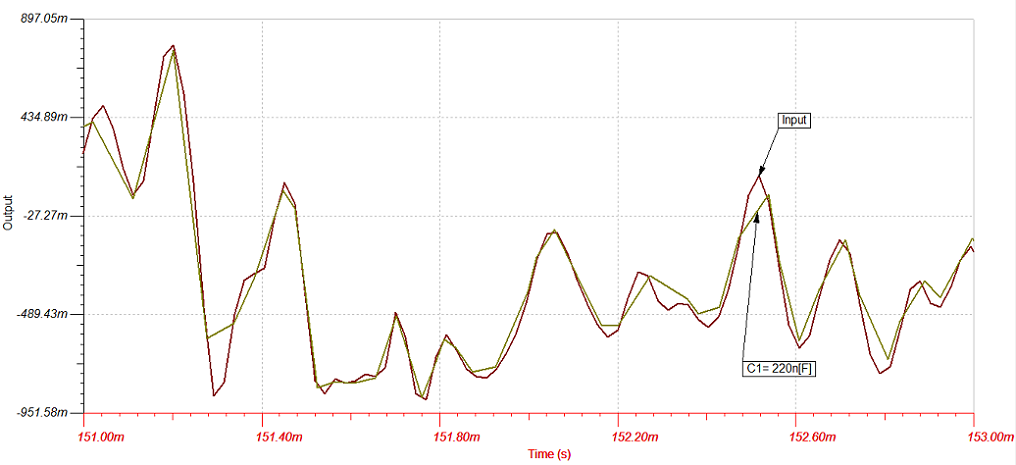Hi,
I simulated a simple first order high-pass filter using a .wav file as input, but the transient response doesn't follow input signal. The circuit I use is the following:High-pass.TSC
And the .wav file is:
I simulated with Capacitor value of 1uF and 4,7uF and the transient response between 151ms and 153ms is quite strange...
What is the issue?
Many thanks.


